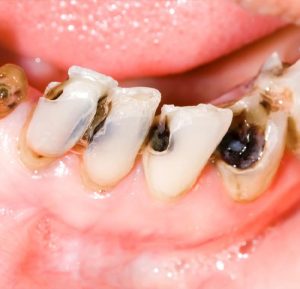
Causes, Symptoms, and Prevention
Dr. Jane mentions that one of the important topics she discusses with her patients is understanding tooth decay. Tooth decay, also known as dental caries or cavities, is a common dental problem that affects people of all ages. It occurs when the hard outer layer of the tooth, called enamel, is damaged by acids produced by bacteria in the mouth.
Tooth decay is a multifactorial disease influenced by several factors. The primary culprits are oral bacteria and a diet high in sugar and carbohydrates. When we consume sugary or starchy foods, the bacteria in our mouth feed on these carbohydrates and produce acids as a byproduct. Over time, these acids erode the enamel, leading to the formation of cavities.
Poor oral hygiene practices also contribute to tooth decay. Inadequate brushing and flossing allow plaque, a sticky film of bacteria, to accumulate on the teeth. The bacteria in the plaque produce acids that attack the enamel and initiate the decay process. Additionally, certain factors such as dry mouth, reduced saliva flow, and genetic predisposition can increase the risk of tooth decay.
Understanding the progression of tooth decay is crucial. Initially, the decay process may not cause any noticeable symptoms. However, as it advances, the affected tooth may become sensitive to hot, cold, or sweet foods. Eventually, a cavity forms, appearing as a small hole or pit on the tooth surface. If left untreated, the decay can penetrate deeper into the tooth, reaching the sensitive inner layers, such as dentin and pulp, leading to toothaches, infections, and even tooth loss.
Symptoms of Tooth Decay:
Recognizing the early signs of tooth decay can help prevent further damage and the need for extensive dental treatments. Common symptoms include:
- Toothache: Persistent or intermittent pain in the affected tooth or teeth is often an early indicator of tooth decay.
- Tooth Sensitivity: Increased sensitivity to hot, cold, or sweet stimuli may signal tooth decay. Discomfort while biting or chewing is also a common symptom.
- Visible Holes or Pits: As tooth decay progresses, visible holes or pits may appear on the surface of the affected teeth.
- Discoloration: Dark spots or stains on the tooth enamel can indicate the presence of decay.
Prevention of Tooth Decay:
Preventing tooth decay is far more desirable than dealing with the consequences. Here are some effective preventive measures:
- Maintain Proper Oral Hygiene: Brush your teeth at least twice a day with a fluoride toothpaste, floss daily, and use an antimicrobial mouthwash to remove plaque and bacteria.
- Limit Sugary and Starchy Foods: Reduce the consumption of sugary snacks, sodas, and foods high in starch to minimize acid production and plaque formation.
- Follow a Balanced Diet: Consume a well-balanced diet rich in fruits, vegetables, whole grains, and lean proteins to support overall oral health.
- Regular Dental Check-ups: Visit Gentle Dental Care Clinic regularly for professional cleanings and check-ups to detect and treat tooth decay at its earliest stages.
- Fluoride Treatments: Consider fluoride treatments, which can strengthen tooth enamel and reduce the risk of decay.
- Sealants: Dental sealants are thin protective coatings applied to the chewing surfaces of the back teeth to prevent bacteria and food particles from accumulating in the deep grooves.
Tooth decay is a common dental problem that can be prevented with good oral hygiene practices, a healthy diet, and regular dental care. By understanding the causes, recognizing the symptoms, and implementing preventive measures, you can significantly reduce the risk of tooth decay and maintain a healthy smile for years to come. Remember, a little effort in preventing tooth decay

